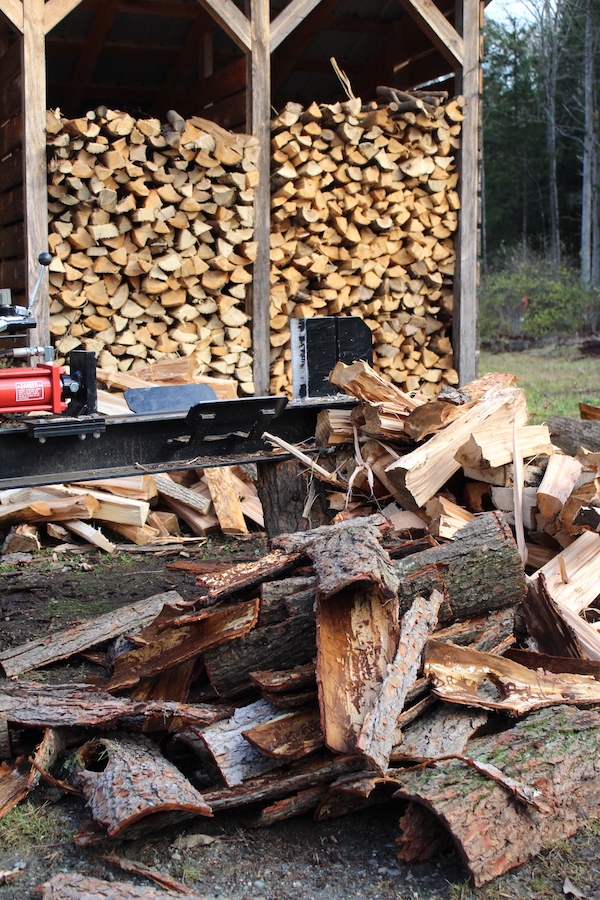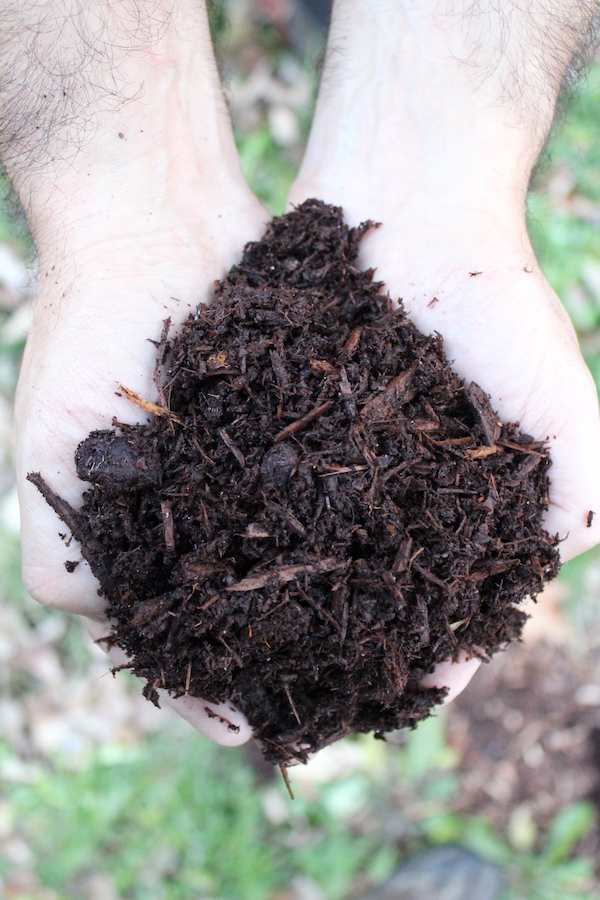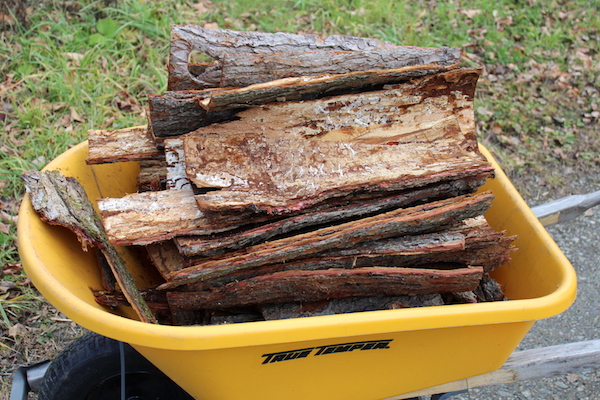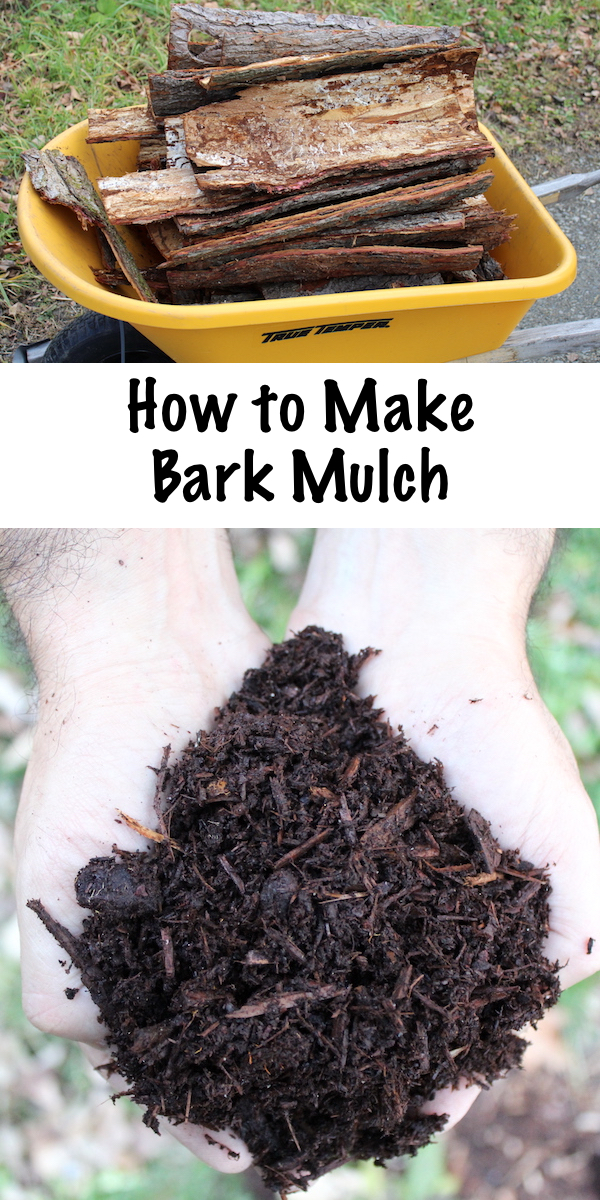Affiliate disclosure: This post may contain affiliate links. Please see our Privacy Policy.
Bark mulch is a great way to keep weeds down in the garden while adding soil fertility.
The problem is, it can be expensive to buy. If you’re heating with wood, odds are you already have a ready source of bark available, now all you need to do is convert it to usable mulch.

No-till gardening is getting lots of attention these days, and for good reason. Tilling up the soil creates a disturbance, which disrupts the natural soil microbes and changes the soil structure.
Over time, tilling can actually lead to more soil compaction, erosion, and nutrient loss. This revelation has led to a number of different no-till gardening strategies, from back to Eden gardening and lasagna gardening, all the way to hardcore permaculture purists.
Regardless of the no-till strategy, they all have heavy applications of mulch in common. While straight wood chips are great as mulch for fruit trees, those same wood chips can cause harm to other crops. We almost killed our field of 30 blueberry plants mulching them with wood chips, and now we stick with wood chips on trees and bark mulch for almost everything else.
Harvesting Bark for Mulch
The nutrient composition of wood and bark are completely different, which means they have very different uses. Wood is dominantly carbon, which means it contains a lot of fuel that can be burned for heat.
Bark, on the other hand, is made up of mostly nitrogen. It dries poorly and contains very few BTU’s, and it’s best removed from firewood if at all possible.
Just about any bark will do, with the exception of pine which can harm some crops. We burn mostly hemlock because we have it in abundance on our 30 acres, and we heat our home with an external boiler that can burn softwood. That’s convenient because hemlock bark makes excellent mulch and pulls away from the log easily during splitting.
Most people are burn hardwood, and there are a number of wood species with thick bark that pulls away easily as well.

Once you have a collection of bark, there are a few options for turning it into easy-to-apply mulch. In the past, we’ve used the caveman method. Basically, just lay it all out in the sun to dry for a few days or weeks, then beat the holy heck out of it with a club.
This method doesn’t give you fine shreds like store-bought mulch, but we’re generally able to get it down to marble or golf ball sized pieces which are easy enough to apply. The benefit is the larger pieces break down slower, so it’ll last longer than finely shredded mulch.
The second option is to use a wood chipper or leaf shredder to pulverize it into fine bark mulch. We use a PTO driven chipper that attaches to the back of our tractor, and it makes quick work of the sheets of bark. Before we had a tractor, and just as effective, we’ve also used a small yard chipper shredder which is much more practical for small backyard applications.

Lacking a chipper, you have another option beyond beating the bark with a club (which is a great workout by the way, and much more fun than weeding, I promise).
You can also just do nothing. Yup, that works too. We ended up selling our chipper because now that we have two toddlers running around there’s just never a good time to use it. We still pull the bark off our firewood and collect it, but then we transport it to the garden in sheets.

While you can beat the bark with a bat, you can also just break up any overly large pieces with your hands as you apply it. The sheet nature of the whole bark pieces actually works better at keeping down weeds. The only tricky part is the spaces where the bark sheets meet.
For that, we use a second layer made of leaves. By layering down first a line of bark sheets and then covering it with a 2” layer of leaves, we create an all-natural mulch for pretty much zero cost.
We have a few hundred-row feet of strawberries and there’s no better mulch for the walking paths between rows. It also works wonders elsewhere in the garden, around perennials and annuals alike.

Given the option, I love the do-nothing method. It takes almost no time to lay out the pieces. The most time-consuming step is raking the leaves, which is a bit therapeutic if you get your mindset right.
Applying this mulch in the fall, we’re able to keep the beds tucked in and insulated during the winter, and then the mulch lasts through the following garden season preventing weeds.
Quick, simple, cheap and easy. What’s not to love?





Hi there, thanks for the great mulch information. I used your do-nothing approach, with local bark (mainly fit) from my rainforest property. I put large chunks of bark around the base of my fruit trees and then secured the bark with netting and staples. However now I’m worried that these large chunks are stopping the rain from getting at the roots, and therefore putting the roots at risk of drying up a bit. What do you think?
Do you have any space around the trunk of the tree or did you put the bark right up against the trees?
Great idea. When you mulch your strawberries in the fall, do you cover them with the bark and/or leaves? In the spring I am planting a whole lot of strawberries and I’ve never wintered them. I’d guess as soon as the snow melts you’d pull back the mulch, as well.
Thanks. I love your site. Just a city dweller, it’s so interesting to see all you do.
Typically straw is used for mulching strawberries. This particular post is about using bark mulch in between the rows, not on the plants themselves.
We have mostly Oak and Maple. I read something about it making the soil to acidic and to use lime to counteract that. Any thoughts? I have been using “sheets” around my vegetable garden beds to keep the weeds down, good to know I am not just a little looney. LOL Thanks
This article from the Oregon Extension office actually suggests the use of Oak and Maple for mulch so I think it will be fine. https://extension.oregonstate.edu/node/81161/printable/print
Amazing! Thanks for sharing. We’d love to try this on our garden beds. My mother was concerned about introducing unknown bugs to our garden beds. Is some sort of cleaning requiered prior to applying the pine bark?
I don’t see this as an issue unless you have a specific issue in your area. Many of the insects that might come along would be very beneficial and aid in the breakdown of the material.
This is great! I have mostly pine bark so I’m gonna have find something else. But I’m wondering, can I use the sheets of bark in my vegetable garden beds? Also what’s the advantage to putting down mulch between beds? If I do that should I pull the weeks beforehand? (Totally newbie gardener here 😃)
Thanks!!
You can definitely use sheets of bark in the vegetable garden but I wouldn’t use the pine. Putting down mulch in between the beds will help suppress the weeds but I would definitely either pull the weeds or you could maybe put down a layer of cardboard over top of them to just kill them.
Great article, good information explaining the difference between using wood chip and bark mulch